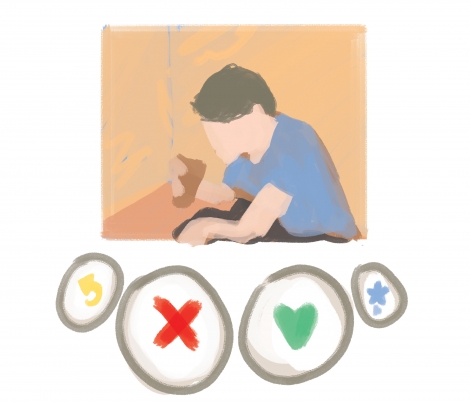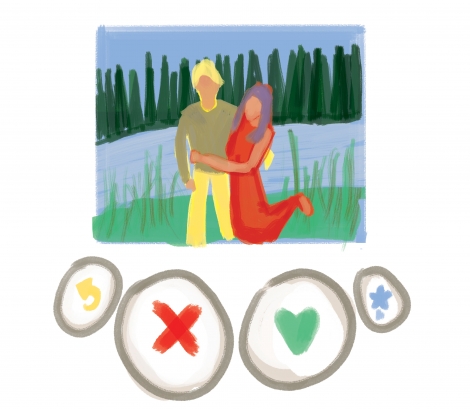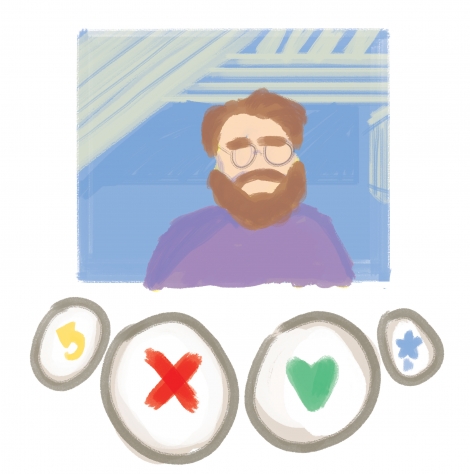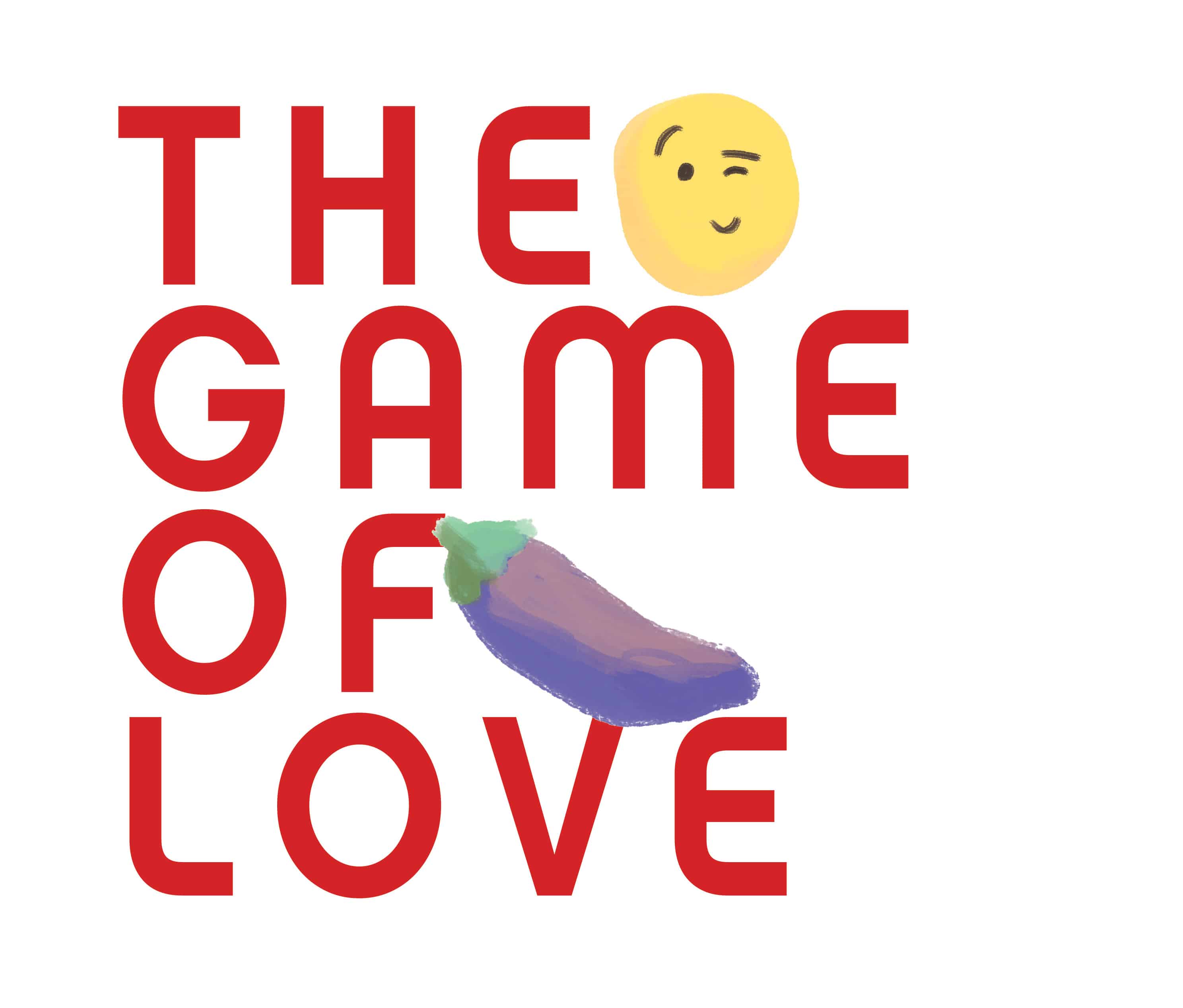I created my Tinder account at a New Year’s Eve celebration in 2015, mainly as a joke to appease my party guests. Days later, I was sucked in, and so began my bumpy journey on the Tinder train, cruising along toward an evermore uncertain romantic future.
Since I got my first match, I’ve been mildly obsessed with the evolving nature of love and intimacy, how our understandings of those concepts have been shaken up by recent technological developments, and our increasing reliance on them as a society. Does the cementing of Tinder into our collective consciousness mean that the nature of courtship itself has reached the point of no return?
I reached out to my Tinder matches to see if they could help me understand what it is that makes the app so appealing to young adults, and its ramifications on the course of romance for years to come.
Tinder, explained
Launched in 2012, Tinder skyrocketed into infamy over a short span of two years, reaching an estimated billion swipes per day by 2014. Predated by old-school dating websites like match.com and OKCupid, a number of similar dating apps — like Bumble, which one of Tinder’s co-founders helped create — have also surfaced. All aim to put love, sex, or whatever else users are looking for at their fingertips.
U of T Economics student, and one of my interviewees found on Tinder, Gregory Markou, appreciates the app. “I think it’s brilliant. It’s a completely transparent way to find somebody,” he says.
Tinder’s mutual opt-in interface means that both parties have to swipe right in order to start a conversation, which — so the story goes — means you can talk to someone who you already know will be receptive to that first message.
“There’s some people who are really good at talking to girls but they’re not good with the first introduction part,” Markou says. “But if they were given the opportunity where they already know them somehow… That’s what Tinder is really good for. It takes away that awkward first five steps.”
What this also does, however, is place pressure on users to stand out from the crowd, leading to a wide variety of first-line strategies designed to grab the attention of potential paramours. One of the lines I’ve been hit with more frequently on the app is the earth-shattering “hey” — a message that continues to clutter my inbox in a variety of manifestations, unanswered to this very day.
All four of the matches I speak to refer to Tinder as a “game,” and some users have taken this approach to the extreme. Markou explains that some of his acquaintances approach the app with a specific strategy: if you don’t get a phone number within the first 10 messages, move on.
Chase Fowler, an Urban Studies and Economics student, mentions stumbling upon a reddit thread in which Tinder users evaluated each other’s profiles and opening lines, sort of like “teaching each other how to play the game.”
I logged onto reddit with the intention of tracking down the thread, which proved impossible given the vast amount of incredibly specific Tinder subreddits I had to go through.
What shocked me — being a naïve and irregular reddit user — was the unabashed exchange of other users’ information and photos, including entire subs devoted to strangers’ nudes.
Because Tinder requires all users to sign in through Facebook, it is chillingly easy to track someone down even if you don’t get their digits. Millennial one-night-stands certainly happen, but it’s virtually impossible to disappear into the woodwork once you go your separate ways.
 For a generation who can maintain contact with their Uber driver weeks after their five-minute ride home, keeping tabs on a hook up is laughably easy.
For a generation who can maintain contact with their Uber driver weeks after their five-minute ride home, keeping tabs on a hook up is laughably easy.
Even while I sat inside the Starbucks where Fowler and I were supposed to meet, we exchanged three texts to coordinate our whereabouts, and he reminds me of this when the conversation turns to anonymity. “Look at how much interaction me and you had even just before… I had to look up your picture to double-check that I was staring at the right person for two minutes.”
“There is definitely that instant connection,” he says.
There’s gotta be a spark
What is ultimately clear is that, over the four years of its existence, Tinder has developed its own niche within the dating scene. As Markou points out, the interactions on the app are effective insofar as they are context-specific — introductory gifs, monkey emojis, and the notorious “wyd” (what you doing) text are not only accepted but have become part of users’ shared language.
It is remarkable how quickly and seamlessly the concept of Tinder dating has translated into contemporary life, complementing and complicating our perpetual search for companionship.
“We’re wired to want to be dating each other, to [be] making connections and whatnot,” Fowler says. “Everyone wants to meet someone. When you get something like Tinder, it’s like that on crack.”
When it comes to finding people we can really connect with, however, it’s questionable how effective tools like Tinder really are. Its algorithms, at least for now, are relatively crude, limited to age, gender, and geographic proximity.
Technology itself can also serve as a barrier to deeper interpersonal connection. There is a strange, unspoken stigma around admitting that you met on Tinder. And when compared to more romanticized first meetings — dropping your books in the hallway, locking eyes in a crowded bar — just swiping right and sending a gif into cyberspace pales in comparison.
“I felt like it just ruined going out and actually meeting a girl in real life,” explains Matthew Lowder, U of T student and musician. “I would just have my matches on Tinder and I could just pick whatever girl I wanted to talk to from my matches, instead of actually going out there… [It’s a] technological advancement in a way but in the same way it just disables you from real life.”
When asked how he compares using Tinder to meeting people in person, Engineering Science student Ramón Sibello says, “I like it far less.”
Sibello attributes this partially to the limited nature of conversation one can have on Tinder, all the while having potentially similar conversations with countless other romantic prospects. “It turns it a bit into a numbers game,” he explains. “You start getting to who you like best from the bell curve.”
The ‘numbers game’ characterization of Tinder falls in line with more widely-held beliefs about sex and open relationships among millennials — often gathered under the umbrella of hook up culture that  characterizes this generation’s amorous antics.
characterizes this generation’s amorous antics.
Despite the problematic nature of this label stigmatizing casual sex and non-monogamous relationships — not to mention the evidence suggesting millennials are no more promiscuous than their older counterparts — beliefs about hook up culture persist across generations.
While Sibello, Lowder, and Fowler are open-minded towards the concept of hook up culture, Markou disagrees.
“Hook up culture is fucked. I’ll be the first one to say it,” Markou says. According to him, not only are people wasting time and money to go searching for hook ups in bars, but doing so also comes with the risk of emotional turmoil if both parties aren’t on the same page — something that can “totally mess with someone’s brain.”
It is also worth noting that Tinder is not usually considered the place for meeting long-term partners. “Everyone associates it with, ‘everyone on Tinder is just trying to fuck,’” Markou says. “They really need to get away from that because they’re losing a huge market, and it’s not helping the hook up culture scene at all.”
Yet at the same time, the prospects of meeting someone online aren’t entirely bleak, and everyone on Tinder has different approaches to that kind of searching. Ultimately, the app is just a platform — how you navigate it and what you get out of it remains up to you.
Love looking forward
Tinder has evolved considerably since its launch. Features like Super Likes, Tinder Social, and Tinder Boost have all augmented the initially unassuming interface. More significantly, last November, Tinder finally introduced more inclusive gender options, granting users the option to describe their own gender identity or to refrain from disclosing this information at all.
This prompted me to ask my matches what they might envision dating to look like 20 years from now, and what technology would have developed in turn.
Most mention the rise of artificial intelligence and the possibility of a more nuanced algorithmic process when generating matches — with the ultimate goal being to tailor your potential partner to your ideal preferences.
Yet Markou and I agree that such minute calculations might take away from the fun of it all, potentially prompting users to log off and do their soulmate-searching off-screen.
We might also consider how much technology can really change what lies at the core of human interactions, especially when it comes to something as ingrained as romantic relationships. In this vein, Sibello says, “meaningful long-lasting relationships, they come back to the same foundations: communication between two people. I don’t think technology can get in the way of that much.”
At the end of each interview, I ask my matches to offer their own philosophies on dating. The results are, in my view, endearing.
 “Swing and see what happens,” Sibello tells me, emphasizing that dating is all about trying things to see what works.
“Swing and see what happens,” Sibello tells me, emphasizing that dating is all about trying things to see what works.
Markou, on the other hand, boils down relationship success to “having freedom in your own space.” He adds, “Go out! Live your life. One person shouldn’t hold you back.”
These are certainly ideas I can get behind, as I’ve been through my share of romantic roller coaster rides. We can hardly blame Tinder for emotional fallout when, as Markou puts it, it only represents “the first step.”
Who knows? Perhaps more futuristic advancements may make the utopian vision of ‘the perfect match’ a more attainable reality.
Still, it’s curious how an app can so significantly influence the way people think about romance. Maybe it’s less about the swiping and more about the people behind the screen.


